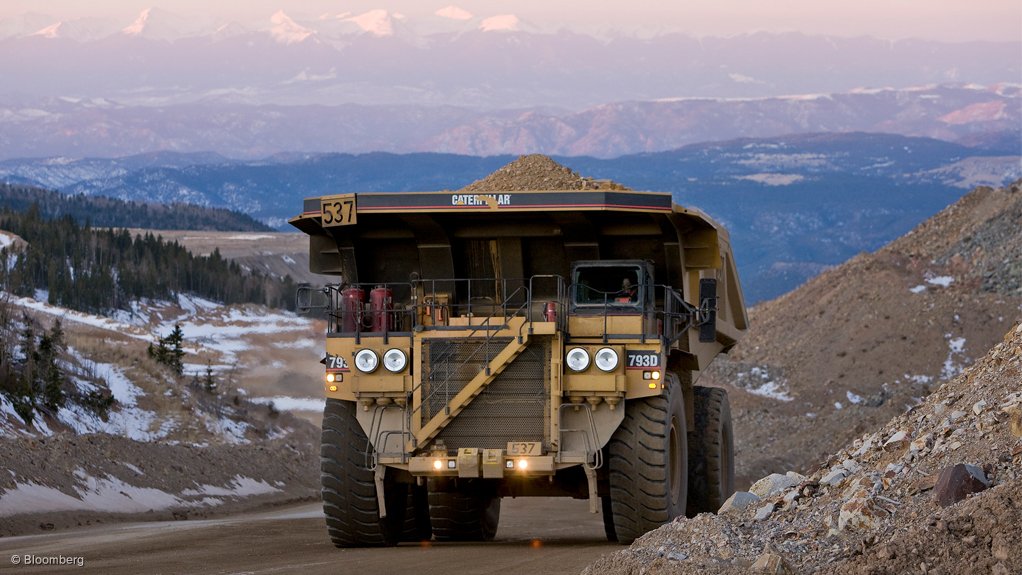Another listless year for mining belies future opportunities
TORONTO (miningweekly.com) – China’s economic shift and the ongoing debate about a US interest rate rise continue to influence and shape the short-term future of mining and metals, Behre Dolbear senior MD Alastair McIntyre told an audience at a recent meeting of the Canadian Institute of Mining’s management and economic society in Toronto.
The concerns surrounding these developments came on top of another year marked by cost cutting, cash conservation and squeezed margins. “Revenues are down and many projects continue to overrun. To be a mining company these days is tough and this is the situation the industry continues to face,” he said.
Global economic indicators have been middling over the past few months, with commodities prices and metals uptake listless. The markets have focused on the slide in China’s gross domestic product (GDP) growth, which was thought to be around 7%, possibly lower.
“A lot has changed in China but its government is still not transparent,” McIntyre said.
“China will release numbers almost in whatever way they want to suit their own book. And that’s kind of the message [one gets] with respect to GDP; you don’t really know for sure what that number means.”
China had been moving towards a more consumer-orientated society and the equity market shocks from June to September were symptomatic of the volatility this shift created, with McIntyre noting that some stocks had plunged 20% to 30% in a day.
Meanwhile, the US economic recovery gained traction and the possibility of an interest rate rise became a hot-button topic. The effects of an increase would be felt across the global markets, with specific implications for commodities traders and producers.
Even on their own, the problems arising from these developments would have been a serious headache for the extractive sectors. However, the fallout from the seniors’ buying spree during the resource supercycle had made matters worse.
Many projects and operations remained shuttered or on sale, while the junior sector was still starved of liquidity. “And this is the new normal; we’ve gone from growth to survival,” McIntyre said. “CEOs must now focus on high-quality assets and making sure capital expenditure is contained.”
Unsurprisingly, the level of mergers and acquisitions (M&A) for the mining and metals industry tracked by Behre Dolbear over 2015 remained in the doldrums. Most activity revolved around the sale of marginal or noncore assets, divested primarily to reduce capital expenditure or to service debt.
Banks were still willing to lend money to companies with strong balance sheets. Those without robust treasuries have sought out alternative forms of financing instead, such as streaming and royalty deals. Few have looked to equities because of weak share prices and worries over dilution.
Alternative financing offered some leeway, albeit coming at a high, longer-term cost for companies. Private equity had also explored the marketplace in recent years, although deals were primarily achieved by those specialising in the sector. “We haven’t really seen any movement from the larger private equity groups,” McIntyre noted.
GREENBACKS AND GOLD
Gold’s performance had been intertwined with the US dollar and its move higher on the US economic recovery. The narrative of gold moving on bad news, strife, political uncertainty or as a store of wealth was secondary by comparison.
The yellow metal’s last peak was during 2011 at just over $1 900/oz. More recently, it had been locked in a $1 100/oz to $1 200/oz range, although it had fallen in the past few days, reaching $1 089.60/oz on the London afternoon fix on November 9.
“When you have a weak dollar, gold is stronger; when you have a strong dollar, you have weaker gold,” McIntyre said. Gold moved higher on stimulus measures like quantitative easing (QE) because the buying of treasuries meant more dollars entering the system, which had an inflationary effect on cash supply. This spurred gold purchases.
The tapering of QE and stimulus measures provoked a reverse move. “Because that’s when people say: ‘Okay, we guess the inflationary side of things is now diminished so we’ll sell gold,’” McIntyre said. “If the US Fed is going to hike [interest rates], then the dollar will increase in value and gold will slide. That’s the correlation.”
Copper, known as an economic bellwether, remained on a downwards trend. In part, this came on the GDP slowdown in China, which consumed around half of global copper output. This appeared to confirm the narrative that China’s uptake of the red metal marches in lock-step with its economy.
But in the past, much of China’s copper uptake was tied to loans. This was because more advantageous rates could be achieved than when borrowing in yuan, McIntyre noted. The monies obtained from these copper/loans transactions were then used to make real estate purchases.
“This helped push the metal price up,” he said. “But now we see real estate markets softening, which means people are unwinding their positions and releasing metal back into a [fully-supplied] market where it weighs on the price.”
SOFT AND STRONG
Oversupply was also weighing on other metals and minerals prices and the markets’ response to the industry had reflected this. “Right now the markets are telling us that there’s too much supply and that they will starve [industry] of capital until the supply situation is sorted out,” McIntyre said.
However, he also stressed that longer-term demand strengths remained in place and were worth remembering. Urbanisation and industrialisation, which stimulated metals demand, continued across the globe, with China alone having more than 230 cities with populations of over one-million people.
And while current conditions had been tough, those companies with robust balance sheets and able to afford M&A were in an enviable position; they could obtain extremely favourable buying terms. “I’d love to be in a company that has a lot of cash and can go out shopping because there are some great deals available,” McIntyre said.
Comments
Press Office
Announcements
What's On
Subscribe to improve your user experience...
Option 1 (equivalent of R125 a month):
Receive a weekly copy of Creamer Media's Engineering News & Mining Weekly magazine
(print copy for those in South Africa and e-magazine for those outside of South Africa)
Receive daily email newsletters
Access to full search results
Access archive of magazine back copies
Access to Projects in Progress
Access to ONE Research Report of your choice in PDF format
Option 2 (equivalent of R375 a month):
All benefits from Option 1
PLUS
Access to Creamer Media's Research Channel Africa for ALL Research Reports, in PDF format, on various industrial and mining sectors
including Electricity; Water; Energy Transition; Hydrogen; Roads, Rail and Ports; Coal; Gold; Platinum; Battery Metals; etc.
Already a subscriber?
Forgotten your password?
Receive weekly copy of Creamer Media's Engineering News & Mining Weekly magazine (print copy for those in South Africa and e-magazine for those outside of South Africa)
➕
Recieve daily email newsletters
➕
Access to full search results
➕
Access archive of magazine back copies
➕
Access to Projects in Progress
➕
Access to ONE Research Report of your choice in PDF format
RESEARCH CHANNEL AFRICA
R4500 (equivalent of R375 a month)
SUBSCRIBEAll benefits from Option 1
➕
Access to Creamer Media's Research Channel Africa for ALL Research Reports on various industrial and mining sectors, in PDF format, including on:
Electricity
➕
Water
➕
Energy Transition
➕
Hydrogen
➕
Roads, Rail and Ports
➕
Coal
➕
Gold
➕
Platinum
➕
Battery Metals
➕
etc.
Receive all benefits from Option 1 or Option 2 delivered to numerous people at your company
➕
Multiple User names and Passwords for simultaneous log-ins
➕
Intranet integration access to all in your organisation





















